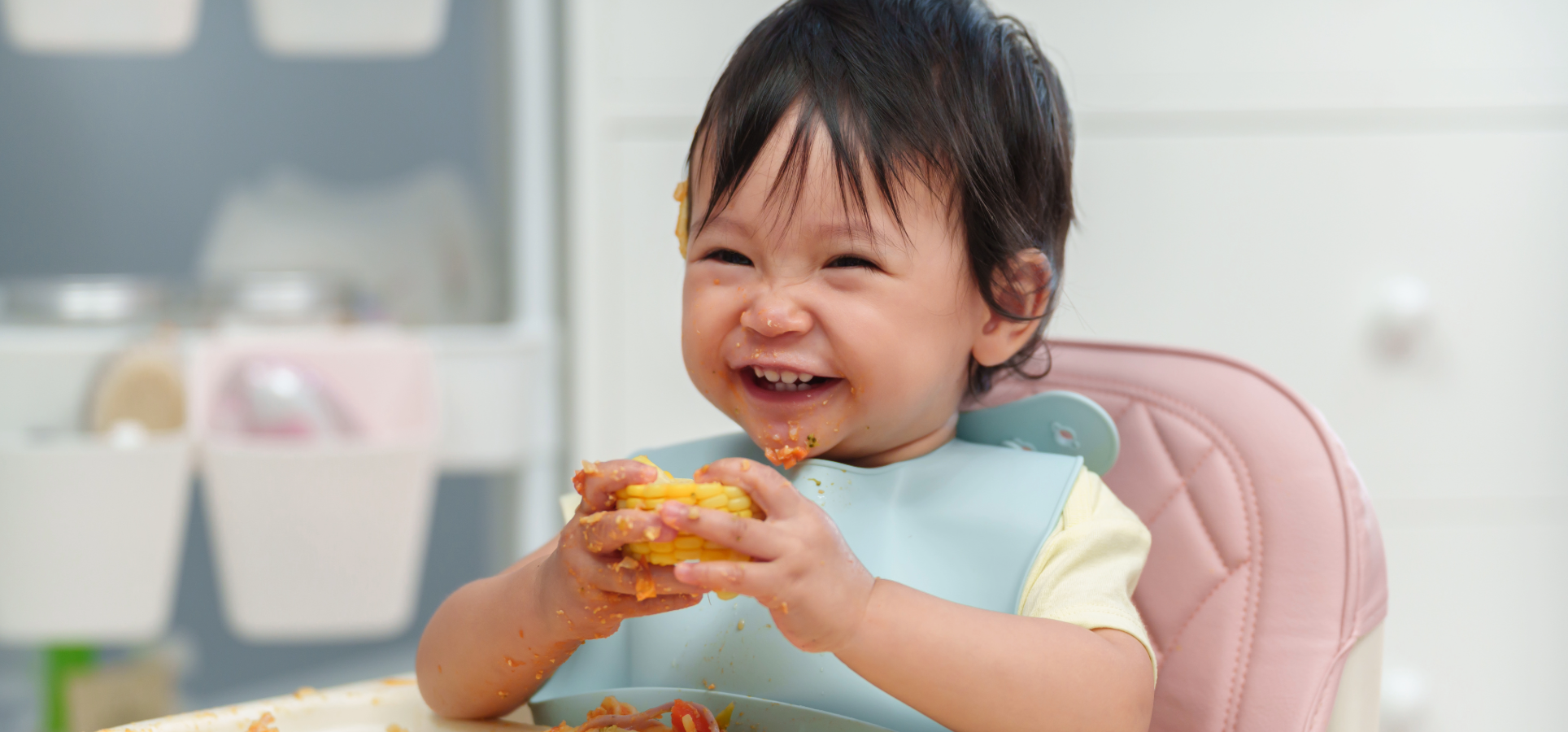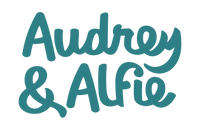
Starting solids can be a really exciting time for many parents. But it also comes with a whole new learning curve, for both parents and babies.
Understanding the basics before you start, can make the whole process smoother and more enjoyable for everyone.
Looking for a quick read? Try our Summary guide (7 top tips) for starting solids here.
What method should you use to start solids?
There are two common methods of introducing solids:
- The Traditional weaning method, where the parent spoon-feeds the baby
- Baby-led weaning, where babies self-feed (usually by picking up food with their hands) from a selection of texture appropriate foods
It is completely up to you and your baby which method you choose to use.
Some babies may be very happy to be fed from a spoon, while others may refuse the spoon but be quite happy to feed themselves. Being open to what works best for you and your baby will help make the weaning process smoother and easier for everyone (you and baby!).
Of course, you don’t have to choose one or the other, either. It is absolutely fine (even beneficial, sometimes) to use a combination of both methods. Using a combination approach, you can either alternate between spoon-feeding and self-feeding at different mealtimes, or offer both at each mealtime.
At the end of the day, so long as the foods you are offering are age-appropriate, and baby is enjoying experiencing and eating nutritious foods, exactly how those foods make it from the plate to your babies’ mouth is irrelevant.*
Offering foods of different tastes and textures (as appropriate) is a good idea regardless of the weaning method you use. Introducing your baby to a broad range of foods early on, and maintaining this through their first few years of life, can help with food acceptance and the development of healthy eating behaviours as they grow.
*Note: you should never force feed your baby or place anything inside their mouth without their consent and awareness (i.e. by pushing a spoon into their mouth without them opening it).
How to tell if baby is ready to start solids?
There is no single age at which all babies are ready to start solids. The right time for your baby is when they are showing signs of readiness and reach the minimum age for the style of weaning you plan to use (more info below). For most babies, this occurs around 6 months of age.
Minimum ages
If you are undertaking traditional weaning method, your baby may be ready to start solids anytime from 4 months of age (but not before). If you are undertaking a baby-led-weaning weaning method, your baby may be ready to start solids anytime from 6 months of age (but not before).
Common signs of readiness include:
- Good head control and able to sit up with support
- Watching and leaning forwards when food is around
- Reaching out to grab food or spoons to put in their mouth (often food that you are eating!)
- opens their mouth when you offer them food on a spoon.
If you are unsure whether your baby is ready to start solids or not, talk to your GP or Maternal Child Health Nurse before starting for individual advice.
What are the best first foods for baby?
When babies are young, breast or formula milk contains all the nutrients they need to grow and develop. As they grow (typically around 6-8 months), babies’ birth stores of some nutrients, in particular iron and zinc, become depleted, so they need to get some of these from solid food in addition to their usual milk.
For this reason, texture-appropriate iron-rich foods are a good place to start when introducing solids to your baby. Iron-rich foods include iron-fortified infant cereals, well cooked meat, chicken or fish, cooked tofu or eggs (ensure the yolk is cooked through).
You can add some vegetables or fruit to your iron-rich foods to help your baby explore different tastes and textures.
Texture
- Traditional weaning: Start with a smooth pureed texture, then move to soft mashed, coarsley mashed, and foods with soft lumps (i.e. lumpy mashed potato).
- Baby-led weaning: Start with soft, easily squishable ‘fingers’ of food that contain no hard lumps of bones (i.e. ripe fingers of avocado or cooked fish without bones)
Including a variety of different foods in your baby’s diet, including foods with different tastes and textures, can help set them up for healthier eating habits later in life. It can also help them to learn how to manage different types of foods in their mouth, and accept natural food variations.
By the time your baby is 12 months old, they can usually eat most of the same foods as the rest of the family and join in family mealtimes. However, it is still important to avoid hard fruits/vegetables and other foods that are known to pose a higher risk of choking, including any food with firm/hard bits, which are round and/or slippery,s, and avoid adding salt to baby’s foods.
What about introducing allergens?
In recent years, evidence has shown us that introducing the key food allergens early (starting from 4-6 months) can help to strengthen the immune system and help to prevent allergies occurring later in life.
Therefore, it is recommended that the top 10 allergens be introduced one at a time (allowing 1-2 days in between), from early on in baby’s solids journey. Introducing these one at a time will help you identify any allergens quickly, if a reaction occurs.
Once you have introduced all allergens, and if there are no allergies present, it is recommended you continue to give your child foods containing the top 10 allergens often (weekly).
Allergy & Anaphylaxis Australia have a number of resources and videos that explain how to spot an allergic reaction, and what to do if one occurs. We recommend all parents empower themselves with this knowledge before introducing the most common allergens, to make sure they are equipped for an emergency.
If your child is having trouble breathing or you suspect they may be having a severe reaction, call Emergency Services immediately – in Australia, dial 000.
What foods should you avoid?
There are some foods you should avoid giving your baby. This can be because they cause a choking hazard, or because they are not good for babies' health.
Anything smaller than a 20-cent coin can cause an airway blockage and be a choking risk for children. They are commonly things that are hard/firm, round or slippery. Examples of foods that pose a choking risk include:
- nuts and seeds, including popcorn kernels (smooth nut and seed pastes are ok)
- bones in fish and poultry
- hard foods like crackers and corn chips
- uncooked apple, carrot, and other hard fruits or vegetables
- whole grapes, blueberries and tomatoes
- fruit pips and stones (i.e. from a plum)
- unpeeled frankfurts and sausages
Supervising your baby or child at all times while eating is very important, to ensure your baby remains in a safe eating position (sitting and supported), and so you can act quickly if your child does start choking.
Note: non-food items can also pose a choking risk. This article by Raising Children Australia contains some examples of non-food choking hazards.
Foods that are not good for babies health:
- Honey
- Raw or partially cooked (runny) eggs
- Foods high in salt such as salty snacks like hot chips and takeaway foods, salted crackers, ready-made simmer sauces, pasta sauces and tinned soups, processed meats such as bacon and sausages, crisps, etc.
- Foods high in sugar such as fruit juice, cordial, cakes, muffins, sweet biscuits and other confectionary, etc.
- Added salt or sugar in cooking
- Caffeine in drinks such as tea, coffee and cola, or chocolate.
Breast milk or age-appropriate formula should continue until at least 12 months of age. Current Australian advice recommends cows milk (or other animal/plant milks) should only be provided as a milk drink from 12 months of age*.
*In 2023, the World Health Organisation updated its complementary feeding guidelines for children aged 6-23 months to say that cows (or other animal) milks could be provided as the main milk drink to infants who are formula fed or mixed-fed, from 6 months of age. However, they also noted that this may increase the risk of iron deficiency, and so if children were consuming animal milks as their main milk drink, parents should take care to offer iron-rich foods alongside. You can read their full guidelines here.
What about water?
Baby can have cooled, boiled water to drink from a cup at mealtimes from 6 months of age. Note that the main purpose of this is to encourage baby to practice drinking from a cup. Milk (breast or formula) will remain their main source of hydration at this point, so if they are not drinking much water don’t worry. So long as they are producing wet nappies each day and seem generally well and happy, they are most likely getting enough fluid.
For more info:
- Raising Children – Why, When and How
- Better Health Chanel – Introducing Solids for Babies
- Pregnancy Birth Baby – Introducing Solid Food
- NHS – Baby’s first solid food


Comments (0)
Back to Starting Solids